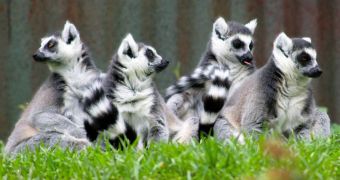While for most people helping one another is just the right thing to do, when biologists observe this type of behavior in animal groups, they don't know what to make of it. According to the theory of evolution, all animals should be selfish, bent on satisfying their own selfish desires, and also in a constant struggle for survival with each other. But how is it, then, that elephants, bees, termites, ants, gazelles, and countless other species live in prides, herds, packs, swarms, and so on? The question has puzzled evolutionists since day one, although theories trying to explain the phenomenon already exist.
For example, in groups of elephants, a mother may at one point take care of her own offspring, as well as of two-three others, belonging to females that are not even related to the first one. According to evolution, the mother should “sabotage” her rivals' chances of passing on their genes by killing the other cubs, or not taking care of them properly. However, it does, and it looks as if it gave birth to all of them, and not just to one or two. The behavior may be explained through a concept called “group selection and adaptation,” which is only one of the aforementioned attempts of elaborating a theory to explain the behavior.
In other words, it may be that the animals have learned to favor and accept traits of individuals that can ultimately benefit the family or the whole group, even if some of the adults may be against the new member. The acceptance of the new members may, in fact, be a very fragile balance between altruistic and self-interested adaptations at an individual and group level. Ultimately, strength is in the number, and a larger group can hunt more easily, fend off predators, build shelters, and so on.
Such may be the case with honeybees, Nature News reports. Workers spend all of their lives cleaning after and taking care of the queen and her larvae, while at the same time the soldiers defend the nest against humans, bears, hornets, or any other predators. There are some workers that never get to see sunlight, but they labor on for the good of the community, and the propagation of the species, as a whole. This is one of the most basic forms of group adaptation, experts believe.

 14 DAY TRIAL //
14 DAY TRIAL //